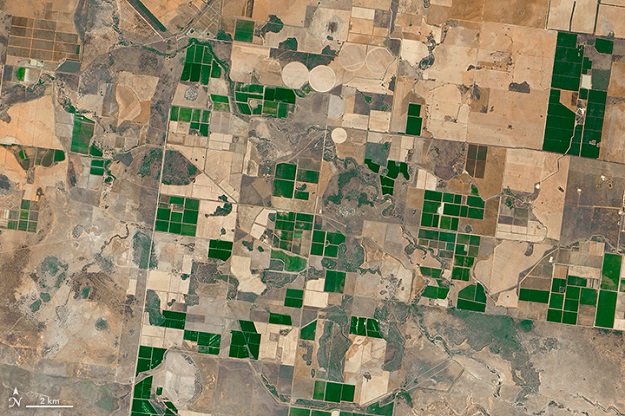
NASA Earth Observatory image by Joshua Stevens and Jesse Allen, using EO-1 ALI data provided courtesy of the NASA EO-1 team.
Two new reports have been issued in recent weeks outlining factors influencing the future of the Australian satellite Earth observation sector.
The first report — AusCalVal: Establishing Australia as a Global Leader in Delivering Quality Assured Satellite Earth Observation Data — sought input from the Australian space and Earth observation community to better understand its quality assurance requirements.
The report was commissioned by Geoscience Australia in consultation with the Australian Space Agency, Bureau of Meteorology and the CSIRO.
The overall conclusion reached is that “Investment is required to uplift Australian calibration and validation infrastructure and capability to support Australia in becoming a global leader in testing and quality assurance for domestic and foreign satellite earth observation missions, accelerate the growth of the Australian space sector, and create opportunity and resilience for the nation”.
Specific recommendations include:
- Creation of an Australian Centre for Earth Observation Quality Assurance
- Coordination of quality assurance infrastructure, maintenance and research, across Government, research and industry
- Provision of quality assurance infrastructure and quality indicator certification services
- Creation of a centralised point of access to data provenance tools
- Deployment of a series of satellite cross-calibration radiometers to improve accuracy and consistency between optical satellites.
The second report, An economic study into the Australian Earth observation sector, was commissioned by Geoscience Australia and undertaken by Deloitte Access Economics.
Specifically, Deloitte was engaged to:
- Estimate the economic contribution of the EO sector and its benefits to end users of EO data across the Australian economy
- Estimate the impact of a denial of service event (DOS) to the EO sector and end users of EO data
- Estimate the potential economic impact of a hypothetical EO satellite program.
One of the most interesting findings concerns the potential impact of a DOS event, with Deloitte noting that “Australia remains exposed to a significant data supply risk”.
“In 2014, more than 60 per cent of Australia’s public Earth observation programs relied on US satellites, with around a third of Earth observation programs relying on Landsat alone.
“At the same time, 25 per cent of Australia’s public Earth observation programs relied on satellite data provided by Europe, and 11 per cent relied on satellite data provided by Japan. Almost all of these programs rely on open access data agreements.”
The report found that “A denial of service event where all open access data used by Australian end users is no longer available results in a $1.9 billion contraction in the Australian economy.”
Stay up to date by getting stories like this delivered to your inbox.
Sign up to receive our free weekly Spatial Source newsletter.






